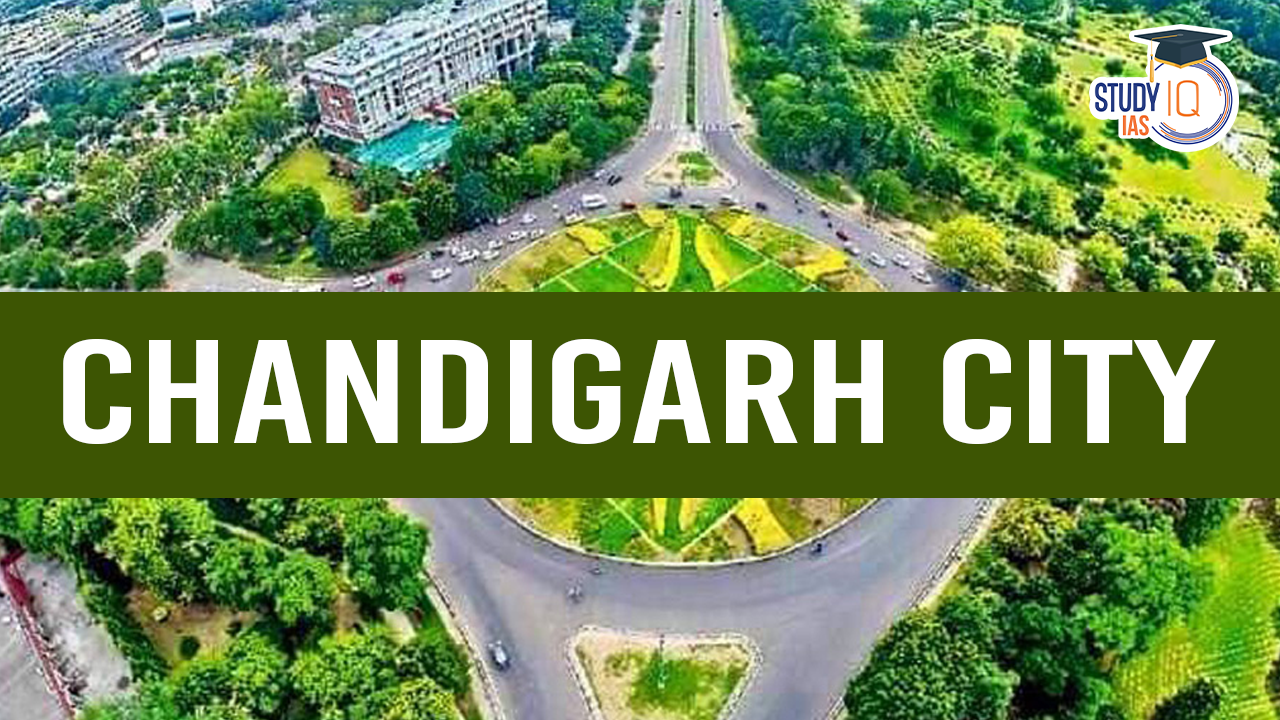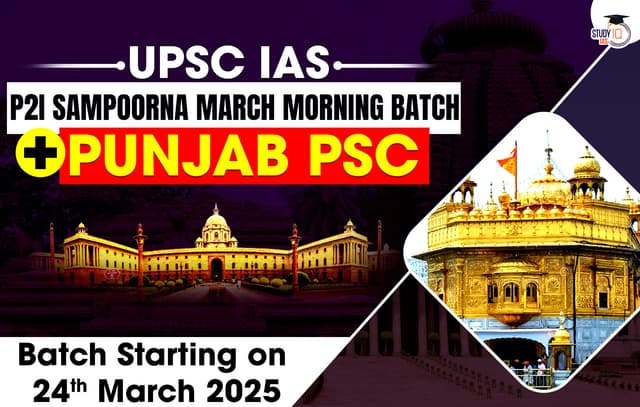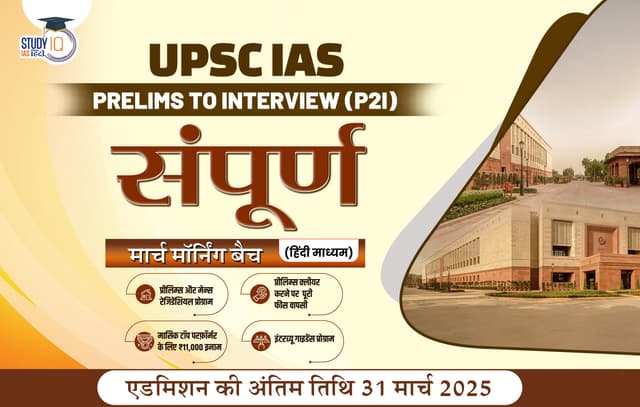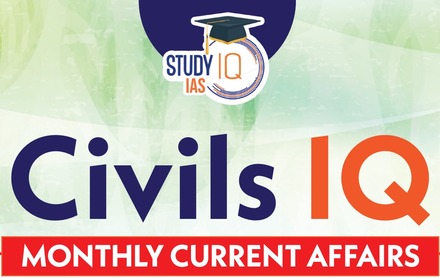Table of Contents
Chandigarh, envisioned by India’s first Prime Minister, Jawaharlal Nehru, is a model city designed by the renowned French architect Le Corbusier. Located at the foothills of the Shivalik range, it is considered one of the finest examples of urban planning and modern architecture in 20th-century India.
The city’s name comes from the nearby Chandi Mandir, a temple dedicated to the goddess Chandi. The word “garh,” meaning fort, along with the temple’s name, inspired the city’s title, “Chandigarh – The City Beautiful.”
| Facts to Remember |
|
Historical Background
Chandigarh has a rich pre-historic history. The area where the city stands was once a large lake surrounded by marshes. Fossil discoveries in the region reveal a diverse range of aquatic and amphibian life, indicating a thriving environment. Around 8000 years ago, the area was also home to the Harappan civilization.
From the medieval period through the modern era, the region was part of the prosperous Punjab Province. Following the partition of India in 1947, the area was split into East and West Punjab. Chandigarh was designed not only to be the capital of East Punjab but also to provide a new home for the thousands of refugees displaced from West Punjab.
In March 1948, the Punjab Government, in consultation with the Government of India, chose the Shivalik foothills as the site for the new capital. This area had been part of the Ambala district according to the 1892-93 gazetteer. The foundation stone for the city was laid in 1952. Following the reorganization of Punjab in 1966, Chandigarh became the shared capital of both Punjab and Haryana, while also being declared a Union Territory under the direct control of the Central Government.
| Master Plan of Chandigarh |
Le Corbusier designed Chandigarh’s master plan with an analogy to the human body. The Capitol Complex (Sector 1) represents the head, Sector 17 serves as the heart, the Leisure Valley and open spaces are the lungs, cultural and educational institutions represent the intellect, the industrial area symbolizes the viscera, and the road network (7Vs) acts as the circulatory system. The city’s design focuses on four key functions: living (residential sectors), working (Capitol Complex, City Centre, Educational Zone, Industrial Area), care of body and spirit (Leisure Valley, gardens, sector greens), and circulation (7Vs and later the V8 cycle pathways).
|
Geology and Geography of Chandigarh
The area of Chandigarh is 114 square kilometres. It is situated at a longitude of 76° 47′ 14″ E and a latitude of 30° 44′ 14″ N.
Geology
The Union Territory of Chandigarh is located in the foothills of the Shivalik hill ranges in the north, which form a part of the fragile Himalayan ecosystem. It is occupied by Kandi (Bhabhar) in the northeast and Sirowal (Tarai) and alluvial plains in the remaining part. The subsurface formation comprises of beds of boulders, pebbles, gravel, sand, silt, clays and some kankar.
- The area is drained by two seasonal rivulets viz. Sukhna Choe in the east and Patiala-Ki-Rao Choe in the west.
- The central part forms a surface water divide and has two minor streams.
- The stream passing through the central part is called N-Choe and the other is Choe Nala which initiates at Sector 29.
Climate
Chandigarh’s climate falls under Koeppen’s CWG category, characterized by cold, dry winters, hot summers, and a subtropical monsoon. Evaporation generally exceeds precipitation, resulting in dry weather.
Seasons: The city experiences four distinct seasons: (i) Summer (mid-March to mid-June), (ii) Rainy season (late June to mid-September), (iii) post-monsoon autumn/transition season (mid-September to mid-November), and (iv) Winter (mid-November to mid-March).
- The summer season is long and dry, with occasional drizzles or thunderstorms. May and June are the hottest months, with average daily temperatures reaching a maximum of 37°C and a minimum of 25°C, though temperatures can peak as high as 44°C.
- The southwest monsoons bring high-intensity showers starting in late June, making the weather hot and humid. Annual rainfall varies significantly, ranging from 700 mm to 1200 mm, with a 20-year average of 1100.7 mm.
- January is the coldest month, with mean maximum and minimum temperatures of 23°C and 3.6°C, respectively.
- Winds are generally light and blow from the northwest to the southeast, with occasional easterly or southeasterly winds during the summer.
Polity
Chandigarh, as a city-state, does not have its own legislative assembly, despite housing the legislative assemblies of both Punjab and Haryana. As a Union Territory, it is directly governed by the Union Government of India and is not part of either state.
Until May 31, 1984, the Administrator of Chandigarh was referred to as the “Chief Commissioner.” Shri Mohinder Singh Randhawa served as the first Chief Commissioner, with Justice Krishna Banerji being the last. On June 1, 1984, the administration of Chandigarh was transferred to the Governor of Punjab, who became the Administrator of the Union Territory. Bhairab Dutt Pandey was the first to hold this position. The title of “Chief Commissioner” was then changed to “Adviser to the Administrator.” Currently, the Administrator of Chandigarh is Shri Gulab Chand Kataria
Major Tourist Attractions in Chandigarh
| Tourist Attraction | Description |
| Zakir Hussain Rose Garden | Located in Sector 16, it is the largest garden of its kind in Asia, with 825 types of flowers. Built in 1967 under MS Randhawa’s guidance, it is a favorite for tourists and nature lovers. |
| Sukhna Lake | Constructed in 1958, Sukhna Lake is part of the Sukhna Wildlife Sanctuary. The sanctuary, spanning 2600 hectares in the Shivalik hills, helps maintain ecological sustainability. |
| Rock Garden | Located in Sector 1, it features sculptures made from waste materials, designed by Nek Chand in 1957. It’s a unique and large garden showcasing creative recycling. |
| Leisure Valley | Spanning 8 km, it is known as the “lungs of Chandigarh.” Located in Sector 10B, it hosts an annual three-day festival, adding to its charm and attraction for tourists. |
| National Gallery of Portraits | A museum honoring India’s freedom fighter, featuring rare documents, portraits, and recorded voices of iconic figures like Mahatma Gandhi and Jawaharlal Nehru. |
| Le Corbusier Center | Built as a tribute to architect Le Corbusier, this center displays his city planning drafts, including those for Chandigarh, America, and Japan. It was his office, transformed into a museum. |
| International Doll Museum | Opened in 1985, it houses a collection of around 250 dolls and puppets from around the world, offering a unique glimpse into global doll culture. |
| Punjab PCS Important Links | ||
| Punjab PCS Notification | Punjab PCS Apply Online | Punjab PCS Syllabus |
| PPSC Eligibility Criteria | PPSC PYQ | Punjab PCS Notes |


 Punjab PCS Selection Process, Prelims, M...
Punjab PCS Selection Process, Prelims, M...
 State Universities of Punjab
State Universities of Punjab













